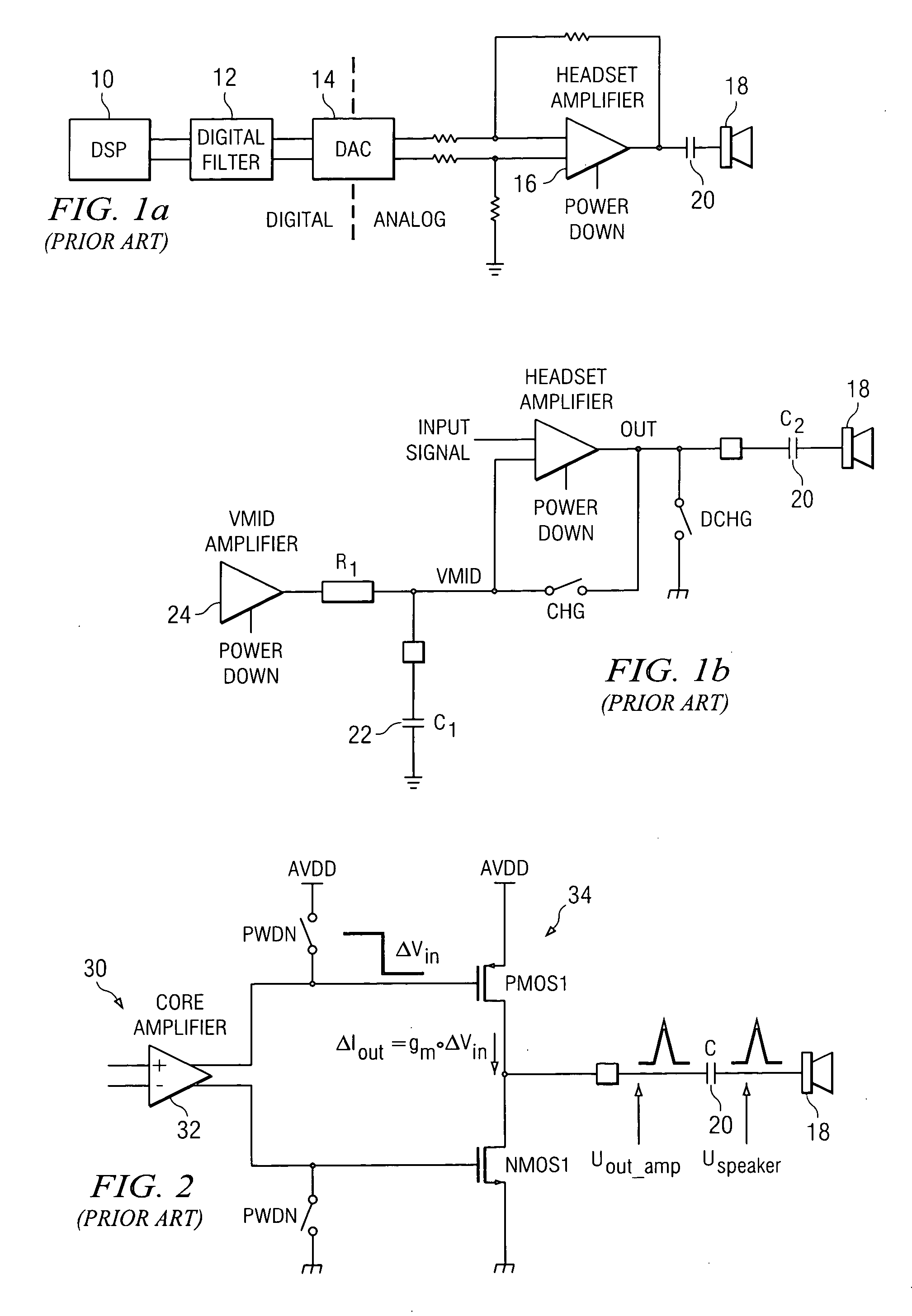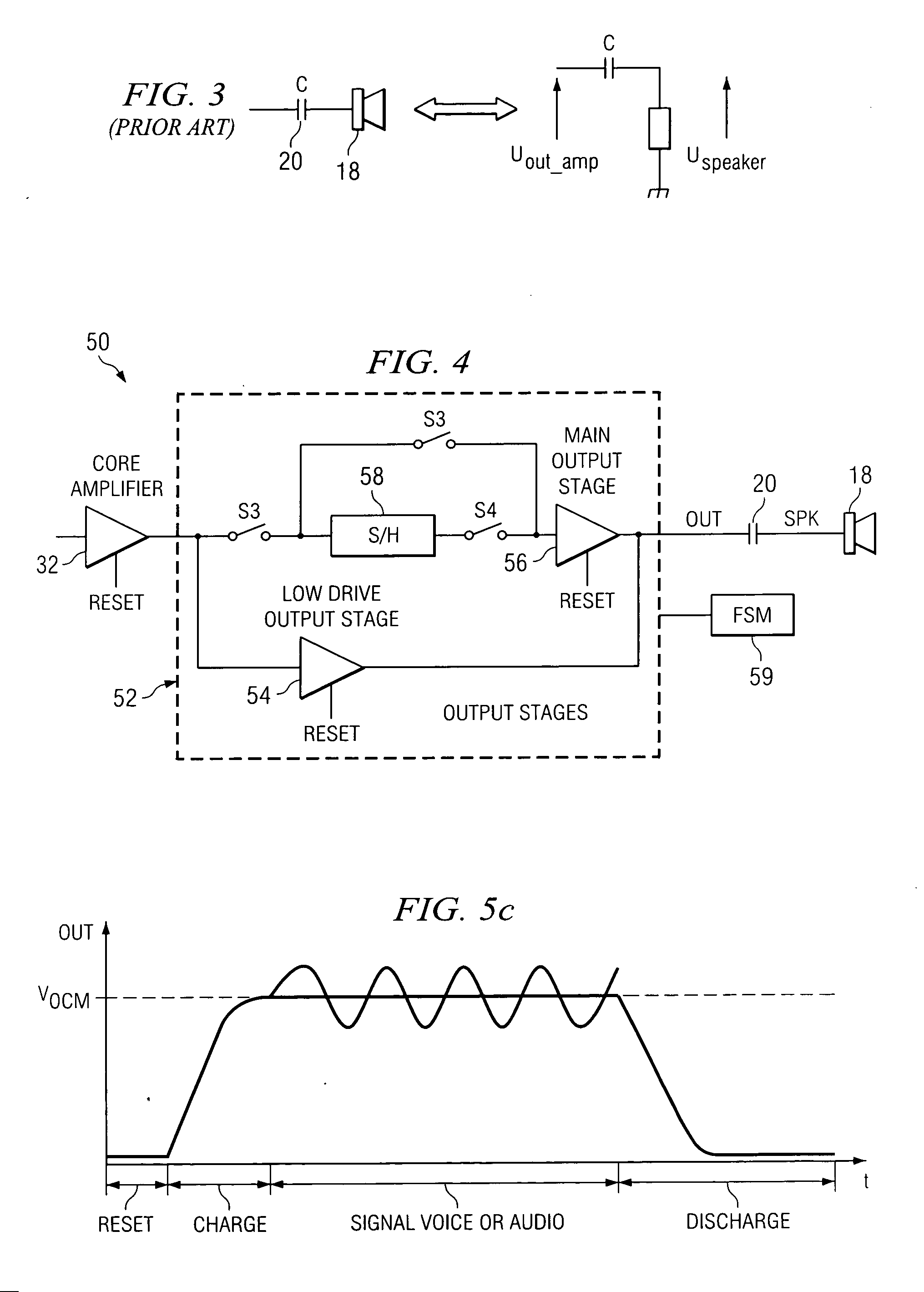Track and hold circuit to reduce pop noise
a technology of reducing pop noise and holding circuit, which is applied in the field of audio amplifiers, can solve the problems of annoying pop noise, especially annoying, and power consumption is an important consideration, and achieve the effect of effectively preventing popping nois
- Summary
- Abstract
- Description
- Claims
- Application Information
AI Technical Summary
Benefits of technology
Problems solved by technology
Method used
Image
Examples
Embodiment Construction
[0029] The present invention is best understood in relation to FIGS. 1-9 of the drawings, like numerals being used for like elements of the various drawings.
[0030]FIG. 2 illustrates a schematic representation of a typical voice or audio output amplifier 30. Amplifier 30 includes a core amplifier 32.and.an output stage 34, which includes p-channel transistor PMOS1 and n-channel transistor NMOS1. PMOS1 and NMOS1 are driven by the outputs of core amplifier 32. The power-up and power-down phases are controlled by control signal PWDN, which implies a voltage step ΔVin on the gate of the transistor PMOS1 (and on the gate of NMOS1, assuming that the voltage step ΔVin has the same amplitude and opposite sign, or the NMOS side).
[0031] The following description of the operation of the amplifier 30 applies to both the PMOS1 and NMOS1 sides of the output stage 32; for simplicity, only the PMOS1 side is described in detail.
[0032] The output transistor PMOS1 works as a transconductance amplifi...
PUM
 Login to View More
Login to View More Abstract
Description
Claims
Application Information
 Login to View More
Login to View More - R&D
- Intellectual Property
- Life Sciences
- Materials
- Tech Scout
- Unparalleled Data Quality
- Higher Quality Content
- 60% Fewer Hallucinations
Browse by: Latest US Patents, China's latest patents, Technical Efficacy Thesaurus, Application Domain, Technology Topic, Popular Technical Reports.
© 2025 PatSnap. All rights reserved.Legal|Privacy policy|Modern Slavery Act Transparency Statement|Sitemap|About US| Contact US: help@patsnap.com



